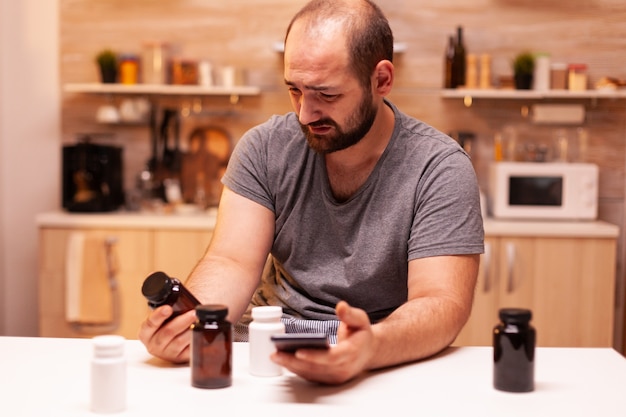
Testosterone is what makes men, well, men. It’s a hormone produced by our bodies that deepens our voice, sprouts chest hair, and helps our muscles and reproductive organs grow. It also boosts our interest in sex. Without testosterone, men just wouldn’t be the same.
It’s no surprise then, that men with low testosterone often try to ignore it or keep it a secret to avoid feeling embarrassed. They might feel less manly and be ashamed to admit they have it and seek treatment. But ignoring the issue does more harm than good.
The symptoms of low testosterone in men include:
– Erectile dysfunction
– Low sex drive
– Changes in body fat and muscle mass
– Decreased energy
– Sleep problems
– Mood changes, like irritability
– Hair loss
– Infertility
Often, men dismiss these symptoms as just signs of aging. While it’s true that testosterone levels naturally decrease after age 30, many cases are actually due to hypogonadism, which is when the body doesn’t produce enough testosterone due to problems with the testicles or the pituitary gland. Hypogonadism can affect men as young as their teens and 20s, not just older men.
The symptoms of low testosterone can also indicate other serious health issues, like high blood pressure, heart disease, diabetes, liver or kidney disease, thyroid disorders, cancer, or HIV/AIDS. Injuries, obesity, depression, and cancer treatments can also cause low testosterone.
Because so many things can cause low testosterone, you need to see a doctor to get an accurate diagnosis. You can’t figure it out on your own. Low testosterone is usually diagnosed when levels drop below about 300 nanograms per deciliter.
If you see a urologist, they’ll discuss different testosterone replacement therapy (TRT) options, which work by replacing the testosterone you’re missing. Here are the types:
– **Gels:** Applied daily to the skin to absorb testosterone.
– **Skin patches:** Worn daily on the upper body.
– **Mouth patches:** Stuck to the gums, releasing testosterone into the bloodstream.
– **Injections:** Injected directly into muscles.
– **Implants:** Pellets inserted into soft tissues that release testosterone over time.
– **Oral pills:** Taken by mouth, but they may have liver side effects.
All these treatments can have side effects, like increased red blood cell count or breast tissue growth, so they’re not for everyone. Men with breast or prostate cancer should avoid TRT as it could worsen their condition.
There are natural ways to boost testosterone levels, like getting enough sleep, maintaining a healthy weight, and staying active.
If you have low testosterone, don’t ignore it to save face. Your health is more important, so seek medical help as soon as possible.